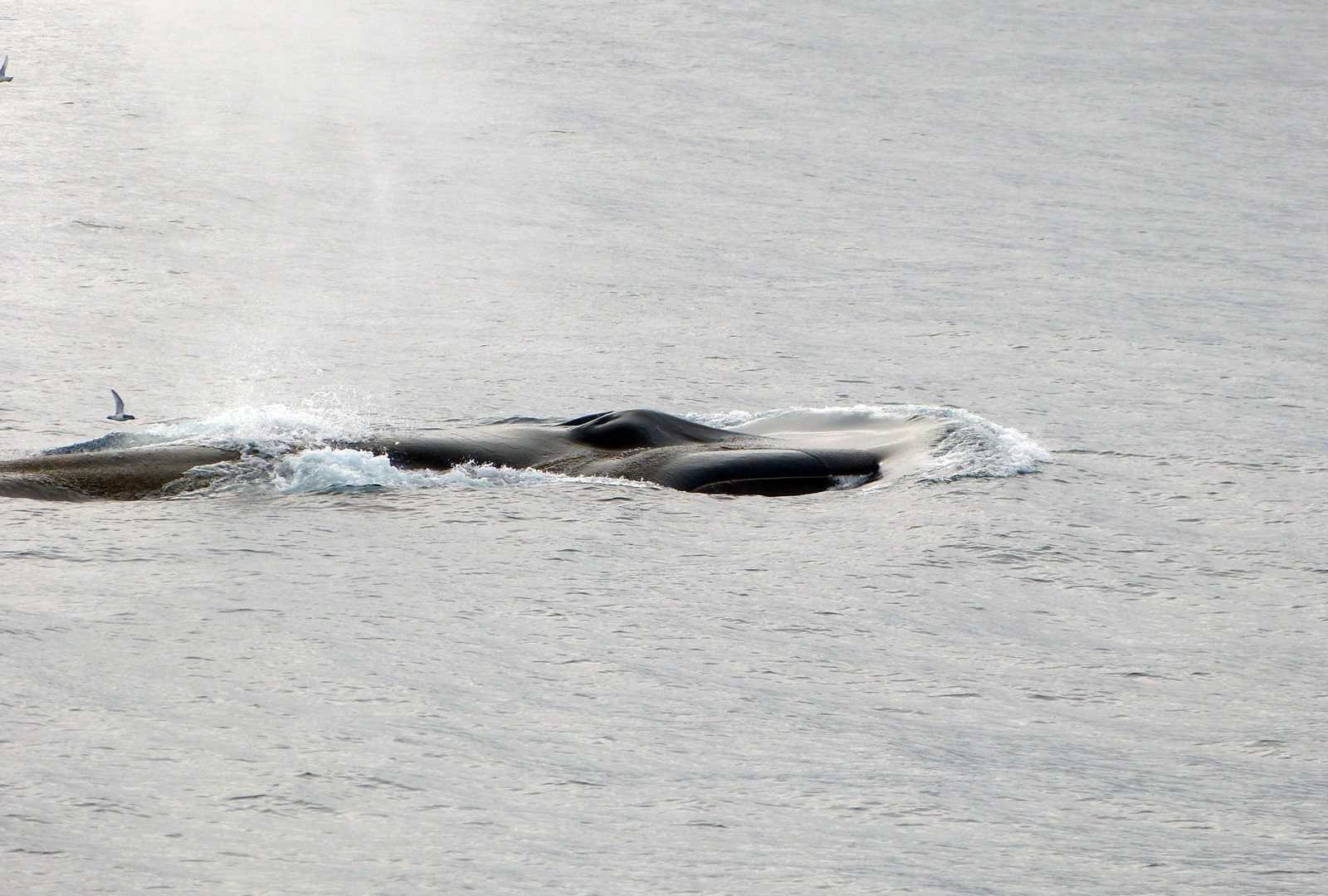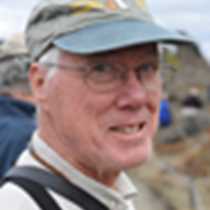Today was the last day of the South Georgia segment of this remarkable trip. During the night, the National Geographic Explorer made her way to the extreme southeast corner of the island to enter Drygalski Fjord. Here, recurrent passes of glacial ice have carved a narrow fjord through some of the oldest rock of South Georgia, a remnant of the ancient supercontinent of Gondwana. We motored into the quiet water of the fjord, gazing up in awe and wonderment at the steep slopes, colored with brilliant mosses and lichens, which reach up to the sharp peaks and knife-edge ridges (arêtes) far above us. At the head of the fjord is the Risting Glacier. The Extreme Ice Survey has placed time-lapse cameras facing the Risting and the nearby Jonathon Glacier in order to document their activity. We paused long enough to drop a Zodiac carrying Eric "The Ice Man" Guth who climbed the slope to the camera installation. There he was able to service the cameras and retrieve the computer chips containing thousands of precious images. Thus, we are able to contribute to the scientific study of the lands through which we travel. It is a good feeling. We parked the ship in front of the glacier. The water was alive with birds, especially Antarctic terns and snow petrels (the all-white phantoms of the southern ice.) They were feeding on prey brought to the surface by the upwelling of fresh water coming from the base of the glacier.
After breakfast, we boarded Zodiacs for a cruise up Larsen Harbour, a side fjord to Drygalski. It is home to the northernmost population of Weddell seals. We found them in the water and, as a group, lazing on the snow. Fur seals have recolonized the shores of these fjords, as they have throughout South Georgia, in the years since they were nearly extirpated by American and British sealers in the late 18th and early 19th centuries. They seemed to enjoy playing in the kelp. Zodiac drivers did not enjoy driving through the prop-grabbing kelp, but their efforts rewarded us with excellent views of the fur seals and South Georgia blue-eyed shags.
And so, reluctantly, we departed from South Georgia, reflecting upon our experiences around this incredible island. The sea was calm, the ride as smooth as we could ever wish. We were planning to spend our afternoon resting, working on our photos, and listening to interesting presentations. However, Chief Mate Yuriy Tupikov ruined all that when he spotted the spout of a whale. It was a big whale, with a very tall spout and an almost comically small fin set far back on its long body. Yes, we were in the presence of a blue whale, the largest animal on the plane now and ever, its mass dwarfing even the largest of the dinosaurs. We grabbed warm clothing and rushed to our favorite viewing spots as the ship maneuvered to give us excellent views and photo opportunities. Once blue whales were abundant in the Southern Ocean, but they seem to be the slowest of the great whales to recover from the depredation of the 20th-century whalers. We can only hope that, with continuing protection, their populations will again approach their previous numbers, so that others might experience what we were privileged to see today. As we waited for the whale to return to the surface to breath, our attention was drawn to the abundance and diversity of seabirds soaring over the productive ocean, including wandering albatross. In that same moment: the largest of all the whales and the bird with the longest wingspan of all. Wow!







